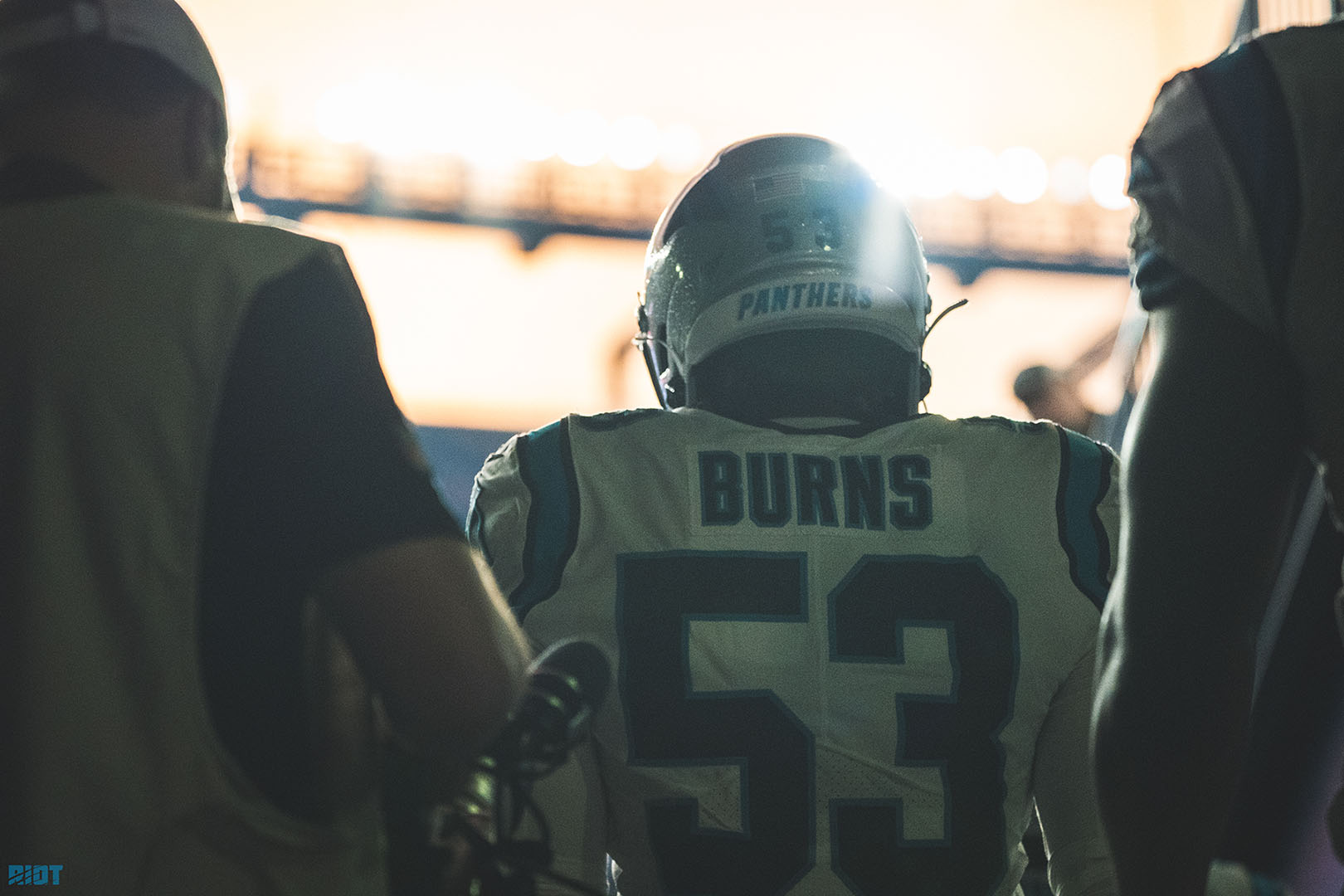When you draft somebody in the first round, you expect them to be a major part of your roster for the next five years – while hoping they become a star. It’s still very, very early but if the early signs are anything to go by, the Panthers certainly have found the first – and they just may have found the second – in Brian Burns.
“With his talent, you do anticipate that we should get a certain level of production from a guy with his kind of talent. When it happens sometimes is different – but there’s a lot that he’s been able to do – we’re excited about what he’s been able to do,” said defensive coordinator Eric Washington. “Tremendous athlete, that’s why we drafted him. His attitude is probably the best part of who he is right now because he’s listening, he’s receptive and he’s working hard – he’s doing a good job.”
Through six weeks, Burns has been named the NFC Defensive Rookie Of The Month for September, notched up 4.5 sacks (12th in the NFL), 3 TFLs (58th) and 11 QB hits (8th) – and he’s thrown a long fumble return into the bargain. So, what is it that Burns does so well, and is it really sensible that he’s not even close to his ceiling?
Run Defense
One of the biggest concerns with Burns entering the NFL was his potential weakness as a run defender, but one of the things his college tape also highlighted was a way of maximizing his impact as a run defender while also limiting his exposure. Over the first six weeks of the season, the Panthers have indeed used Burns in this way, getting him to set the edge in order to keep contain:
With the option to then chase the play from the back side using his remarkable speed for the position:
However, there have also been instances where Burns has looked vulnerable in run defense. Tight ends shouldn’t really be able to drive edge defenders backwards in the run game:
And he can be a bit slow to get his arms up at times, making it easier for blockers to get inside hand placement and make it hard for him to work off blocks:
The other thing you might be able see in the above clip is Shaq gently pushing Burns inside as the play goes on, and there have been a couple of times – including the earlier play where he went up against the tight end – where his gap discipline has also been less than ideal. It’s hard to know for sure that it was him that messed up on the following play without inside knowledge of the defense, but it certainly appears as though he allowed his blocker to get inside him to create an inside rushing lane:
Though it shouldn’t be assumed that it is not Jermaine Carter who in fact wanders out of his block. Burns wasn’t drafted to be an elite run defender, and while he hasn’t been bad in this regard through six weeks, this is one of the areas where he could probably make the biggest improvement with the least work.
Pass Rush
The appeal of Burns as a prospect pre-draft was in his quickness and ability to bend around the edge, and even compared to NFL competition, this really stands out on tape:
His bend, in particular, is extremely impressive; in the first of the two plays above, he is barely a foot above the ground as he turns the corner to work back to the quarterback. This allows him to really threaten the outside shoulder of the offensive tackle at all times, which, in turn, should open the door to inside pressure. Burns has also shown some flashes of high level pass rushing moves, most notably the ability to hesitate and feign an inside move before breaking outside and around the tackle:
There are several things to note here. First, his ability to decelerate and re-accelerate is remarkable for a player with his length – this is going to create real issues for whatever tackle he goes up against. He also combines this with some really nice hand usage, in the first instance using the inside arm well to allow him to work around the tackle and in the second case, using a nice outside punt and inside swim to get outside leverage.
The other thing that has stood out about Burns thus far this season in a positive sense is his ability to create pressure as a pursuit defender – when quarterbacks break the pocket, he is able to use his length and speed to generate pressure where other players simply wouldn’t have the ability to:
However, what this means is a large amount of Burns’ statistical production has come not as the result of him beating the tackle in front of him, but rather through his ability to chase quarterbacks down once they break the pocket. This doesn’t make his statistical production illegitimate, but rather suggests that it should be possible for him to increase his production significantly if he is able to generate more production when the quarterback stays inside the pocket.
Up Next: What Makes Burns Special



